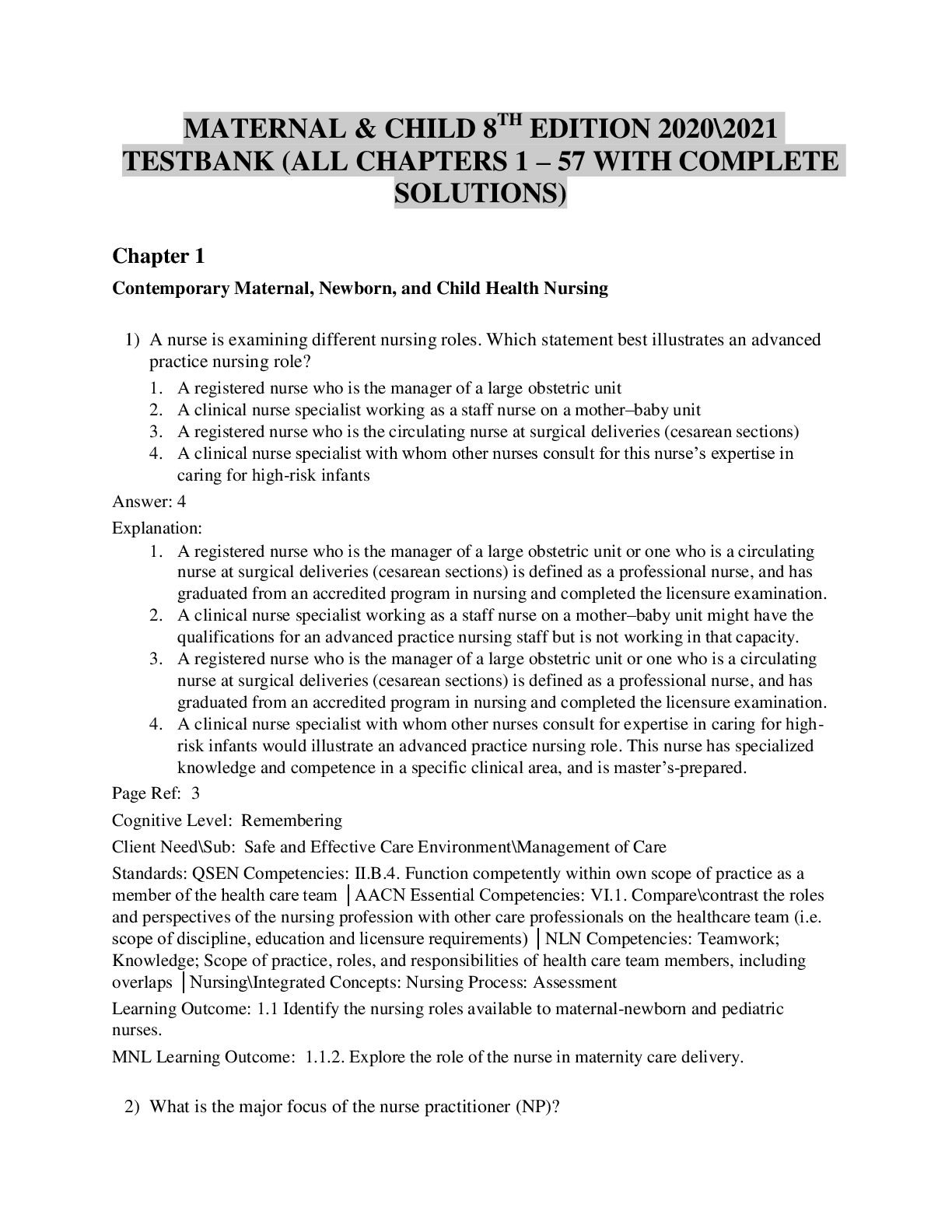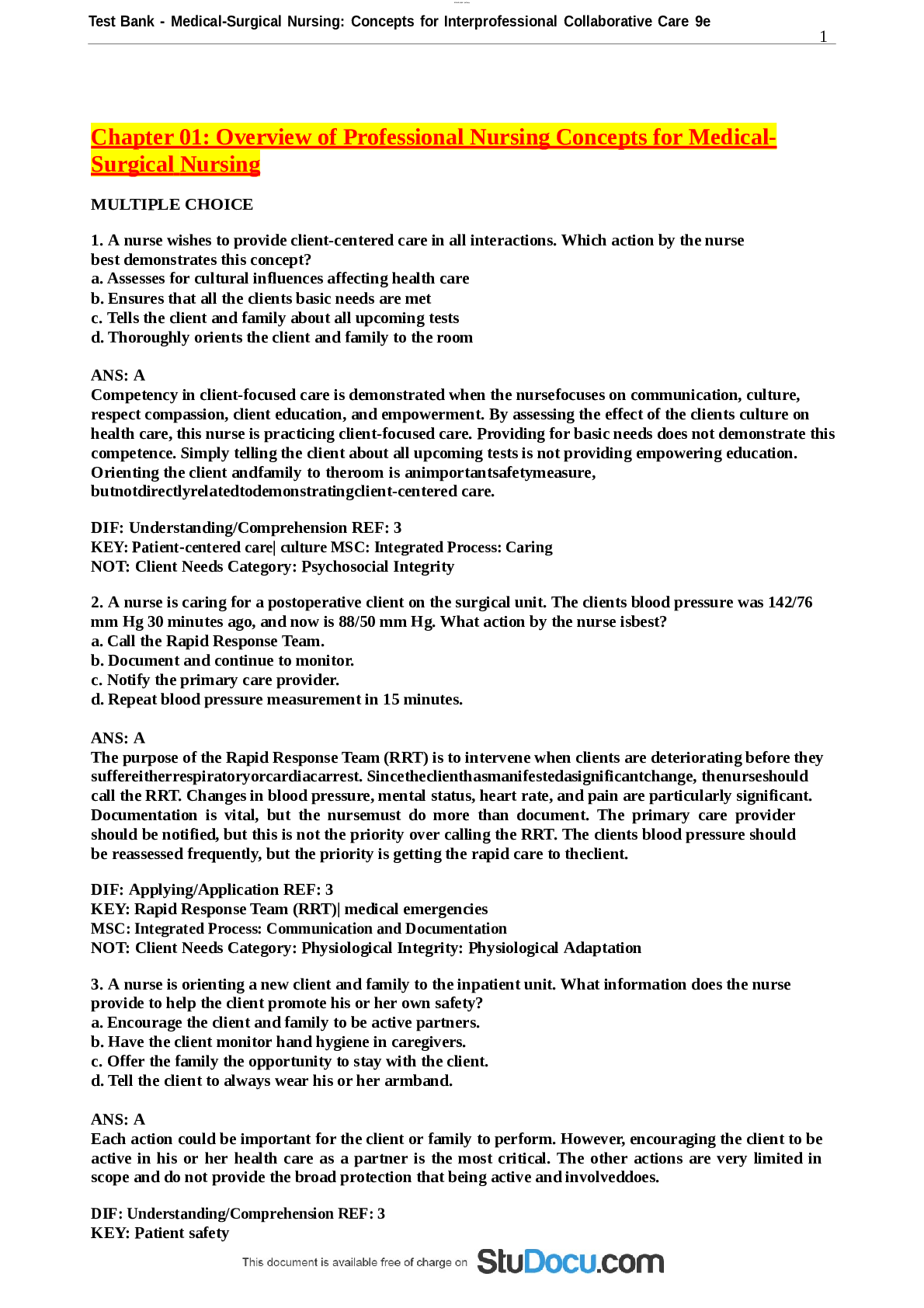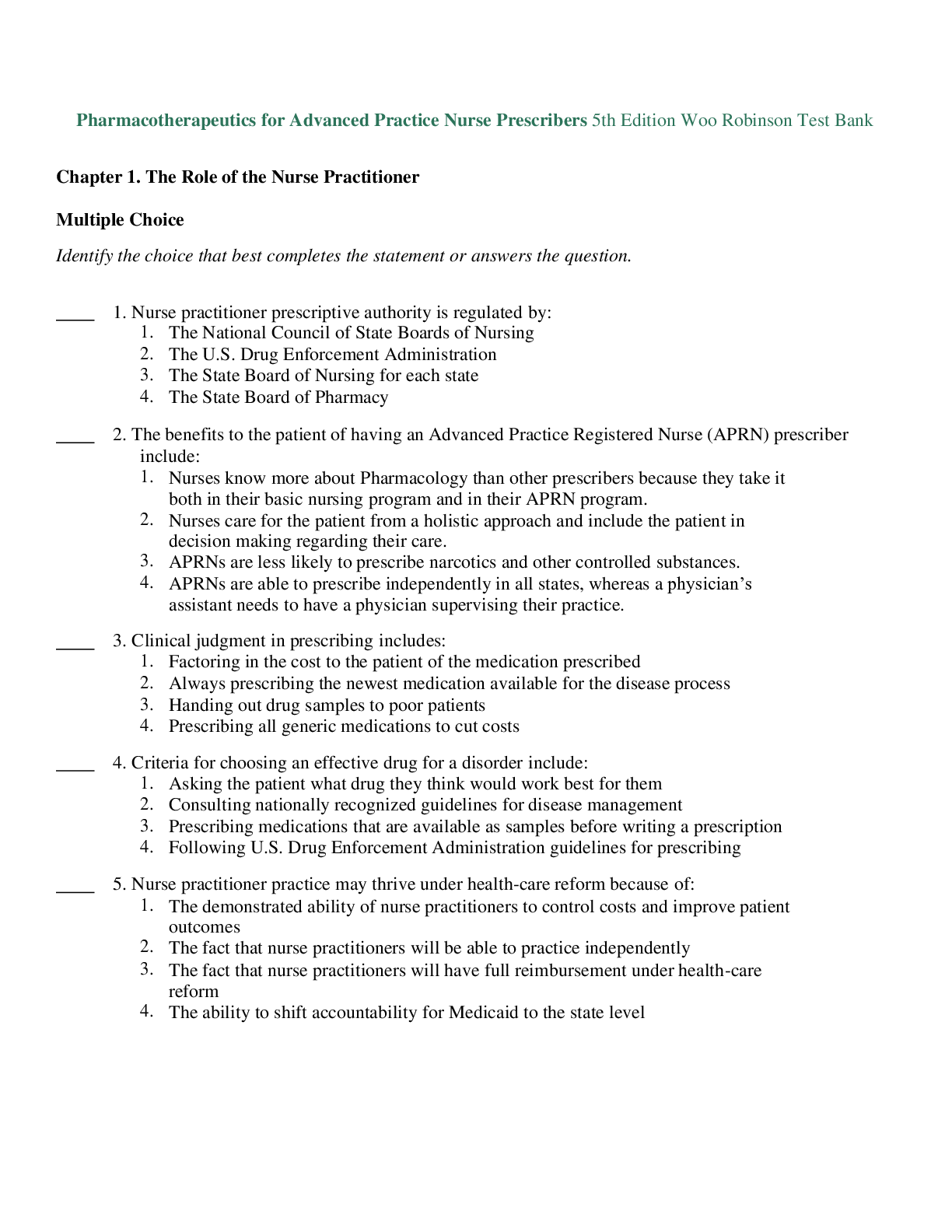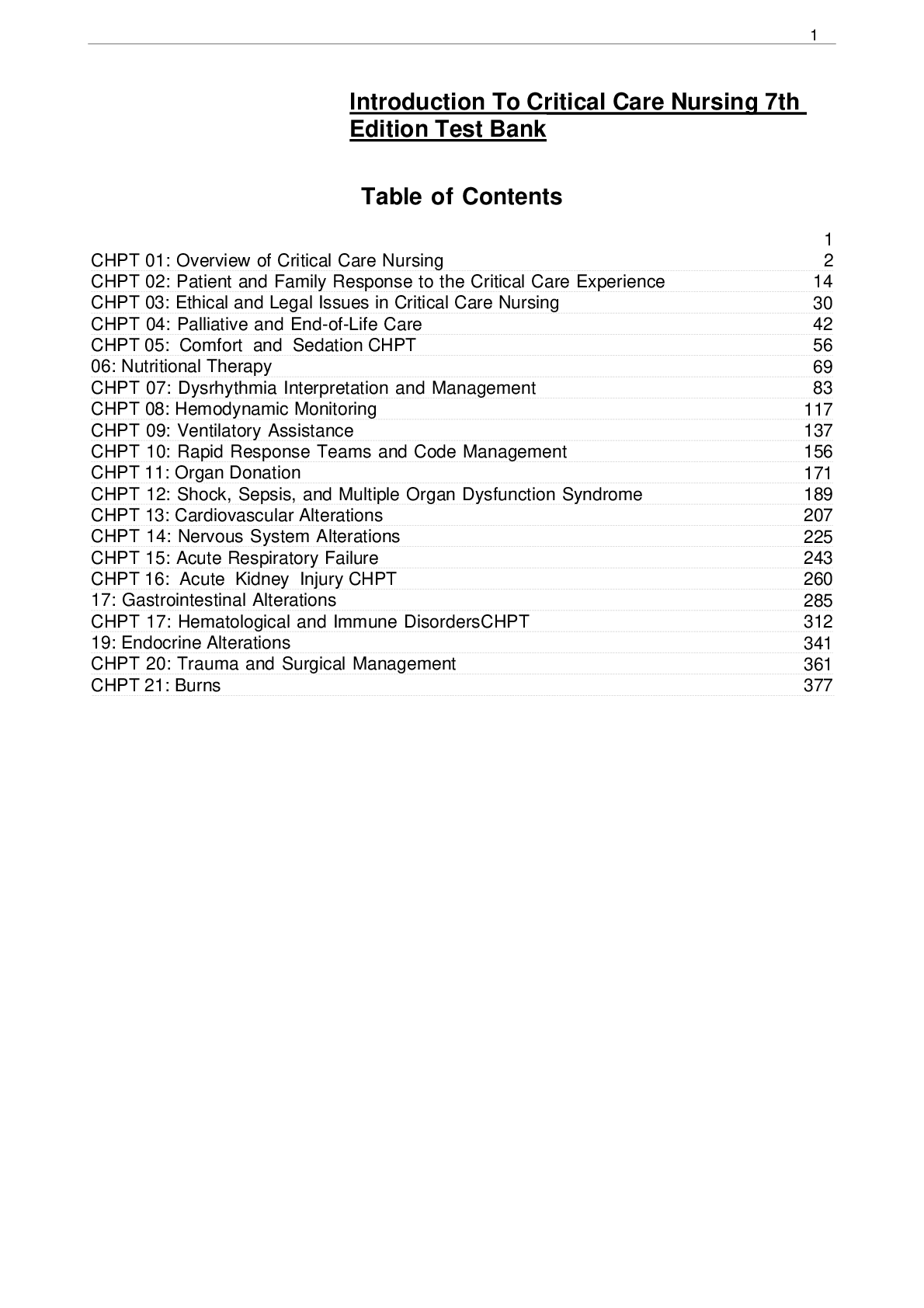Environmental Science > TEST BANKS > Living_in_the_Environment_11th_ed._Sample_Test_Bank_Questions.All Questions Answered. Revise for you (All)
Living_in_the_Environment_11th_ed._Sample_Test_Bank_Questions.All Questions Answered. Revise for your Summer exams and score an A.Chapter 1 to 26 a total of 520 Q & A
Document Content and Description Below
1. Resources that are called nonrenewable a. are also called perpetual resources. b. are only resources that are alive. c. are capable of economic depletion. d. are only resources that are alive a... nd that are capable of economic depletion e. none of these answers. > c 2. Hunter-gatherer environmental impacts were kept low by a. exponential growth of their populations. b. reliance on fossil fuels as an energy source. c. giving nature time to recuperate after they moved on. d. high use of resources. e. all of these answers. > c 3. The Agricultural Revolution resulted in all of the following except a. protection of wild plants and animals. b. increased soil erosion. c. increased deforestation. d. salt buildup from irrigation. e. increased desertification. > a 4. Which of the following generalizations about developing countries is true? a. They are highly industrialized. b. They have high average GNPs per person. c. They include the United States, Canada, Japan, the former Soviet Union, and European countries. d. They make up about one-tenth of the world's population. e. They use about 12% of the world's resources. > e 5. All nonrenewable resources can theoretically be a. converted to nonmetallic minerals. b. converted to renewable ones. c. exhausted or depleted. d. recycled or reused. e. used perpetually. > c 6. All of the following illustrate exponential growth except a. the king who promised to double the number of grains of wheat he put on each successive square of a checkerboard. b. human population growth. c. driving 10 mph for one minute; then 20 mph for one minute; then 30 mph for one minute; then 40 mph for one minute. d. money in a savings account. e. folding paper in half 50 times so that the thickness would reach the sun. > c 7. A major stimulus for the Industrial Revolution was a. the bubonic plague b. European wars. c. a shortage of wood. d. poverty. e. food shortage. > c 8. Pollution prevention receives about _____% of the U.S. environmental pollution budget. a. 1 b. 5 c. 10 d. 25 e. 50 > a 9. Energy use during the Industrial Revolution was based primarily on a. wood. b. solar power. c. labor by human muscle. d. labor by domesticated animals. e. nonrenewable sources. > e 10. The market value in current dollars of all goods and services produced within a country for final use during a year is the a. gross national product b. gross domestic product c. per capita GNP d. per capita GDP e. inflation-adjusted GDP > b 11. Which of the following best describes the concept of environmental degredation? a. using solar power at a rapid rate b. using oil c. cutting trees for wood products d. letting agricultural runoff cause oxygen depletion and fish kills downstream e. fertilizing crops > d 12. Which of the following statements about biodiversity is false? a. 5% of the world's land areas has been set aside to protect wildlife. b. Only half of the minimum land needed to protect wildlife has been set aside. c. Biodiversity loss has been increased because of the need to grow more crops on more land. d. Total forest area increased in the 1980s. e. Since the 1980s, there was reduced forest biodiversity due to replacement of diverse old-growth forests with tree farms. > c 13. The Agricultural Revolution is characterized by all of the following except increased a. respect for the environment. b. demand for minerals. c. spread of disease. d. pollution. e. waste production. > a 14. All of the following are broken down by biological action except a. sewage. b. litter in the environment. c. lead and mercury. d. organic garbage. e. wooden objects. > c 15. At least ten million people die annually from a. cancer and diabetes. b. heart attacks and strokes. c. malnutrition, related diseases, and contaminated drinking water. d. accidents. e. AIDS. [Show More]
Last updated: 2 years ago
Preview 1 out of 59 pages

Buy this document to get the full access instantly
Instant Download Access after purchase
Buy NowInstant download
We Accept:

Reviews( 0 )
$13.00
Can't find what you want? Try our AI powered Search
Document information
Connected school, study & course
About the document
Uploaded On
May 03, 2021
Number of pages
59
Written in
Additional information
This document has been written for:
Uploaded
May 03, 2021
Downloads
0
Views
132




.png)







